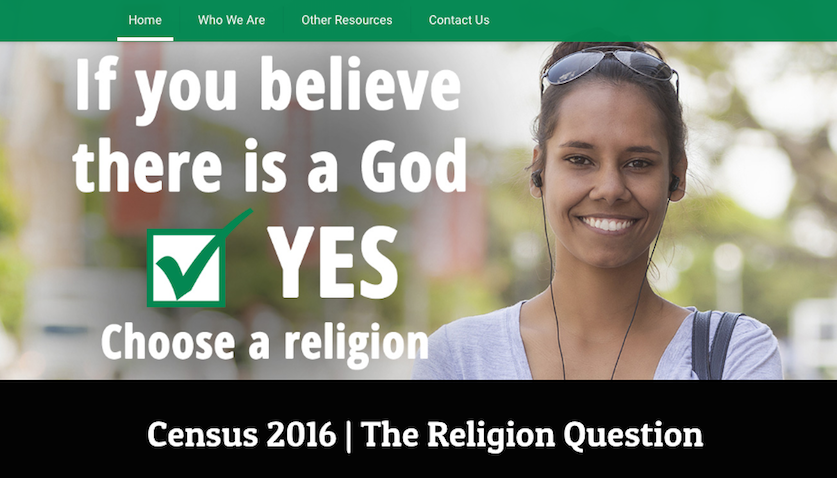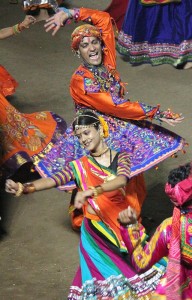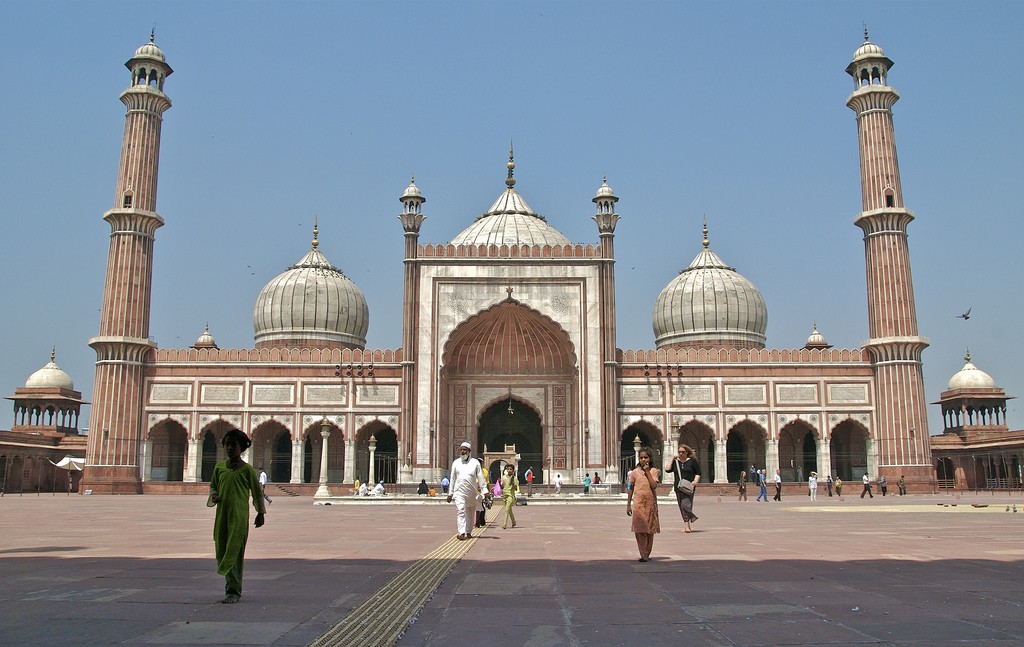 Responding to census questions is not simply reporting already self-evident identifications. The process of asking the questions creates those identifications and the groupings that organize the census data. The current census effort in Australia, scheduled for today, illustrates this point quite clearly. Due to the increasing number of respondents reporting “No religion” on the voluntary religion question, census officials have shifted that response to be first on the list of possible responses, which has generated competing campaigns to influence how people identify themselves, and thus the results of the 2016 Census. Continue reading “The Stakes are High, in Australia”
Responding to census questions is not simply reporting already self-evident identifications. The process of asking the questions creates those identifications and the groupings that organize the census data. The current census effort in Australia, scheduled for today, illustrates this point quite clearly. Due to the increasing number of respondents reporting “No religion” on the voluntary religion question, census officials have shifted that response to be first on the list of possible responses, which has generated competing campaigns to influence how people identify themselves, and thus the results of the 2016 Census. Continue reading “The Stakes are High, in Australia”
Love, Community, and Cow Urine
 Constructing and maintaining a group, a community, requires significant effort, and at times that effort generates disagreements. In India, an organization announced this week that they were restricting admission to Garba, a traditional dance that is a major component of Navratri, a nine-night festival honoring the goddess. Only people recognized as Hindus can participate, banning specifically those identified as Muslim. A local leader of the VHP, an organization associated with Hindu nationalism, asserted, “Incidents of love jihad where Muslim boys lure and marry our Hindu girls happen at Garba. Our only aim is to protect our girls.” Continue reading “Love, Community, and Cow Urine”
Constructing and maintaining a group, a community, requires significant effort, and at times that effort generates disagreements. In India, an organization announced this week that they were restricting admission to Garba, a traditional dance that is a major component of Navratri, a nine-night festival honoring the goddess. Only people recognized as Hindus can participate, banning specifically those identified as Muslim. A local leader of the VHP, an organization associated with Hindu nationalism, asserted, “Incidents of love jihad where Muslim boys lure and marry our Hindu girls happen at Garba. Our only aim is to protect our girls.” Continue reading “Love, Community, and Cow Urine”
When the Census Creates Fear
 Are Muslims taking over India? Recently released data from the 2011 Census of India generated various headlines, from the alarmist assertion that the percentage of the population identifying as Hindu has declined to the calmer emphasis on the slowing growth in communities identified as Muslim. One Hindu nationalist organization provocatively asked in response to the data, “Is there a larger conspiracy to Islamise Bharat [India]?” These reactions to demographic shifts look familiar, like responses to demographic change in the US concerning religious affiliation or ethnic identity. Analyzing the dynamics underneath the numbers reveals that these instruments are not simply describing changes in our world but constructing our world in particular ways. Continue reading “When the Census Creates Fear”
Are Muslims taking over India? Recently released data from the 2011 Census of India generated various headlines, from the alarmist assertion that the percentage of the population identifying as Hindu has declined to the calmer emphasis on the slowing growth in communities identified as Muslim. One Hindu nationalist organization provocatively asked in response to the data, “Is there a larger conspiracy to Islamise Bharat [India]?” These reactions to demographic shifts look familiar, like responses to demographic change in the US concerning religious affiliation or ethnic identity. Analyzing the dynamics underneath the numbers reveals that these instruments are not simply describing changes in our world but constructing our world in particular ways. Continue reading “When the Census Creates Fear”
Identifying Threats of Violence
 With discourses surrounding terrorism and gun violence, which have become prominent again in the wake of Charleston and Chattanooga, people want to find patterns that illustrate the source of the threats of violence. Looking for these patterns, people engage in an act of comparison, which, as we have discussed on this blog previously, is more about the person constructing the comparison than some reality outside of him/her. For example, I have seen various social media posts recently that include lists of acts of violence, ranging from 9/11 and the storming of the US Embassy in Iran to the Chattanooga shootings, all attributed to people who identified as Muslims. While these posts appear to be direct descriptions of reality, they reflect the choices of the creator of the list as to which acts of violence to include and which identifications to include. Continue reading “Identifying Threats of Violence”
With discourses surrounding terrorism and gun violence, which have become prominent again in the wake of Charleston and Chattanooga, people want to find patterns that illustrate the source of the threats of violence. Looking for these patterns, people engage in an act of comparison, which, as we have discussed on this blog previously, is more about the person constructing the comparison than some reality outside of him/her. For example, I have seen various social media posts recently that include lists of acts of violence, ranging from 9/11 and the storming of the US Embassy in Iran to the Chattanooga shootings, all attributed to people who identified as Muslims. While these posts appear to be direct descriptions of reality, they reflect the choices of the creator of the list as to which acts of violence to include and which identifications to include. Continue reading “Identifying Threats of Violence”
Who Supports Persecution?
 The persecution of Ahmadis has hit the news again with the killing of an American Ahmadi doctor in Pakistan last week while he was volunteering in an Ahmadi hospital. Having written on the issues of labels in relation to the Ahmadi before at the Bulletin for the Study of Religion blog, I found the careful phrasing of the Reuters article about the shooting of the doctor impressive. Describing the Ahmadi as “a group that says it is Muslim but whose religion is rejected by the state,” I appreciated the precision with which the author acknowledged who described the Ahmadi as Muslim and who rejected that label. This phrasing is similar to what I have advocated generally. To acknowledge that labels are both contested and consequential by stating with precision who applies and contests particular labels is imperative. Continue reading “Who Supports Persecution?”
The persecution of Ahmadis has hit the news again with the killing of an American Ahmadi doctor in Pakistan last week while he was volunteering in an Ahmadi hospital. Having written on the issues of labels in relation to the Ahmadi before at the Bulletin for the Study of Religion blog, I found the careful phrasing of the Reuters article about the shooting of the doctor impressive. Describing the Ahmadi as “a group that says it is Muslim but whose religion is rejected by the state,” I appreciated the precision with which the author acknowledged who described the Ahmadi as Muslim and who rejected that label. This phrasing is similar to what I have advocated generally. To acknowledge that labels are both contested and consequential by stating with precision who applies and contests particular labels is imperative. Continue reading “Who Supports Persecution?”
Why religious hatred?
 During the 1800’s, British colonizers identified particular conflicts as being “religious,” a description that many now describe as part of the British strategy of Divide and Rule. Scholars have noted examples of British accounts of “religious conflict between Hindus and Muslims” whose details, as the British recorded them, actually undermined such assertions, as participants whom the records identified as Hindus and Muslims participated on both sides of specific conflicts. Continue reading “Why religious hatred?”
During the 1800’s, British colonizers identified particular conflicts as being “religious,” a description that many now describe as part of the British strategy of Divide and Rule. Scholars have noted examples of British accounts of “religious conflict between Hindus and Muslims” whose details, as the British recorded them, actually undermined such assertions, as participants whom the records identified as Hindus and Muslims participated on both sides of specific conflicts. Continue reading “Why religious hatred?”
Unsettling Sikh and Muslim Conflict
Katy P. Sian, Unsettling Sikh and Muslim Conflict: Mistaken Identities, Forced Conversion, and Postcolonial Formations (Lexington Books, 2013).
Sian focuses on the process of identification and the ways the interests of those who identify as Sikhs and the context of contemporary Britain generate narratives about “dangerous Muslims” seducing young Sikh women. These narratives address multiple community issues (e.g., shifting gender relations, generational differences, differentiation from a feared Muslim other, alliance with Europeans, etc.). Although a little thin in places, she clearly illustrates Sikh identity as continually constructed, not pre-existing.
